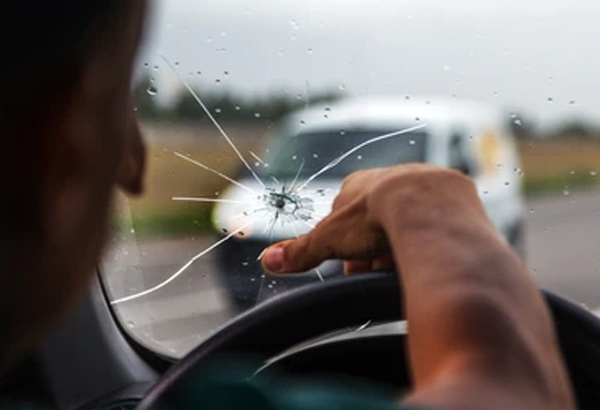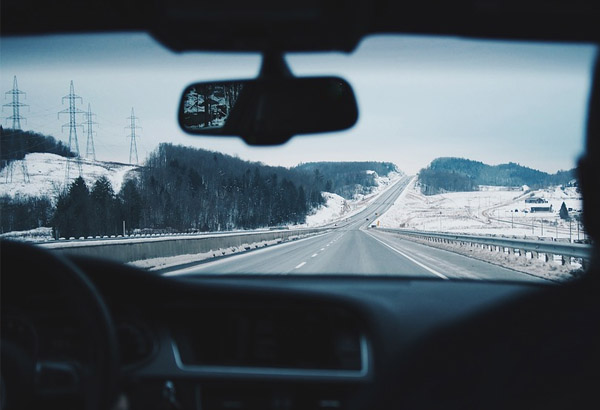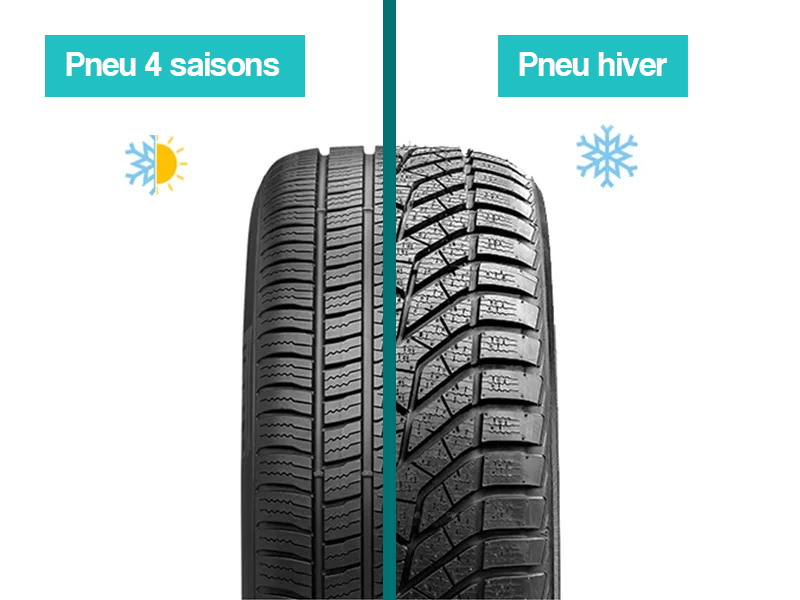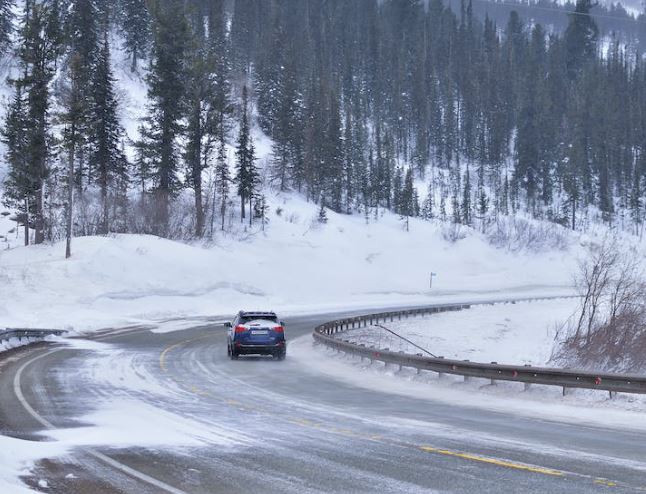Driving on snow: our 10 tips
Drive on snow-covered or icy roads with complete peace of mind!
The best attitude to adopt in winter conditions is preventive driving. Even when equipped with winter tires, you are strongly advised to reduce your speed, maintain a safe distance, ensure your vehicle is properly maintained, check its equipment and behave with caution, courtesy and respect for the highway code.

Care and caution are essential when driving on snow.
Here are a few tips from Autoglas Luxembourg to help you plan your journey with peace of mind.
The importance of good visibility when driving on snow
Winter conditions make your windshield more fragile. Indeed, changes in the weather impact and weaken the structure of the glass, which expands and contracts in response to these temperature changes.An impact is a small hole in the glass. If water slips through and freezes, ice will form in the hole.
The hole is then blocked, and the ice presses against the glass, causing it to crack.
Ne démarrez pas sans avoir une visibilité suffisante, à l’avant, à l’arrière ainsi que sur les côtés. Abstenez-vous des coups d’essuie-glace tant qu’il reste une couche glace sur le pare-brise ou les balais d’essuie-glace. Vous risquez d’abîmer vos balais et dans les pires cas, vous ferez sauter le fusible en forçant le système.
En cas de chutes de neige trop fortes qui altèrent fortement votre visibilité, arrêtez-vous sur le bas-côté et allumez vos feux de détresse afin ne pas surprendre les autres conducteurs.

Adopt anticipatory driving when driving on snow
It’s important to anticipate your movements. Forget sudden acceleration (especially on hills), hard braking and hard steering wheel movements, to ensure your safety and that of other drivers.
Every movement must be carefully measured to avoid slipping or losing control of your vehicle.
However, if you need to brake in an emergency and your vehicle is not equipped with ABS, gently depress and release the brake pedal several times to prevent the wheels from locking.
If your vehicle is equipped with ABS, you can depress the brake. The ABS system will automatically adjust the braking intensity.
When you start your vehicle
Votre accélération doit être progressive pour démarrer votre véhicule stationné sur une route verglacée/enneigée : passez la 1ʳᵉ vitesse et relâchez très lentement votre pédale d’embrayage tout en accélérant doucement. Si vous rencontrez des difficultés pour le démarrage en 1ʳᵉ vitesse, tentez avec la seconde vitesse tout en maintenant une accélération douce.
Driving on snow: Keep your distance
Keep a safe distance between you and the vehicle in front.
No one is immune to skidding, even when driving in the right weather conditions. This safety distance will give you the time you need to brake smoothly.
According to the French road safety organization Sécurité Routière, it is recommended to maintain the following safety distances:
35 m at 50 km/h ;
60 m at 90 km/h ;
90 m at 130 km/h.

Getting to grips with sloping roads
On downhill roads, avoid braking to limit your acceleration, preferring engine braking when downshifting.
Engine braking is possible when you don’t use any pedals: your vehicle will decelerate on its own. On the other hand, if you use the clutch pedal or the brakes, you’ll prevent this from happening and risk sliding downhill. Always maintain a safe distance from your vehicle, and brake only when necessary.
Invest in winter tires

Note: Driving on winter tires is only mandatory when weather and road conditions require it. There is no specific start or end date for winter. You are required to fit 4 identical tires on your car.
Driving a vehicle in Luxembourg in winter conditions (icy roads, snow, patches of ice or frost) is only permitted with winter tires (winter tires or “all-season” tires marked “M.S.”, “M+S”, “M&S” or alpine symbol) on all wheels.
As soon as the temperature drops below 7°C, we recommend replacing your summer tires with winter tires.
In fact, a winter tire with a softer rubber compound withstands low temperatures and retains all the tire’s elastic properties, which improves handling on wet surfaces thanks to better water evacuation. With winter tires, braking distances are shorter than with conventional tires.
What’s more, the tread of a winter tire is equipped with a large number of sipes, increasing grip in winter conditions.
Winter tires are therefore better suited to winter conditions than summer tires. They guarantee greater safety thanks to better vehicle control.
Negotiate your turns well
When approaching a bend, anticipate and gradually reduce your speed. Braking as you approach a bend will increase the risk of skidding.
Once you’re in the bend, keep your speed constant to limit the car’s imbalance. You can then pick up speed again when you’re in a straight line.
Don't wait to chain
En cas de fortes chutes de neige, si vous sentez que votre voiture est instable sur la route, il est préférable de sortir les chaînes/chaussettes à neige.
En circulant sans équipement adéquat, vous augmentez le risque de causer un accident.
Checking and preparing your vehicle for winter
Make sure your car is in good working order before every journey. This check should be stepped up in winter, as certain components such as the battery, bulbs and windscreen wipers are particularly heavily used.
Don’t forget to use a frost-resistant windshield washer fluid as winter approaches.
In winter, sub-zero temperatures can cause certain liquids to freeze. The windshield washer fluid in a special reservoir in the hood of your vehicle could freeze in winter if you use a standard washer fluid.
For a comfortable journey in winter, we recommend that you keep the following items in your car: a scraper, a pair of gloves, a de-icing product, “winter” windscreen washer fluid, a flashlight and, if necessary, a survival blanket and/or plaid, a mobile phone charger and mineral water.


